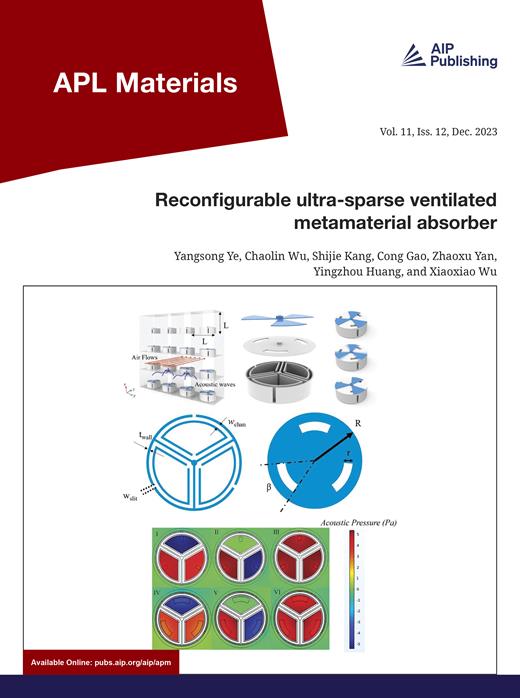InAs 基量子阱中自旋分辨朗道水平的面内栅极诱导转变不对称现象
IF 5.3
2区 材料科学
Q2 MATERIALS SCIENCE, MULTIDISCIPLINARY
引用次数: 0
摘要
研究了在横向电场和垂直磁场作用下,从准二维电子传输到准一维电子传输的交叉过程,即从扩散到准弹道和从零场到量子霍尔的过程。研究人员利用 InGaAs/InAlAs/InAs 量子阱制作了面内栅极和霍尔条,该量子阱承载了载流子密度约为 6.8 × 1011 cm-2、迁移率为 1.8 × 105 cm2/Vs、光照后有效质量为 0.042me 的二维电子元件。在温度低至 50 mK 和磁场高达 12 T 的条件下进行的磁传输测量产生了 g*=16 的高有效朗德因子,从而能够在 2.5 T 的磁场中解析自旋分裂子带。在量子霍尔机制中,对有效收缩宽度的静电控制能够引导边缘通道的反射和传输,从而在填充因子 ν = 1 和 ν = 2 时分离出完全自旋极化的边缘通道。改变收缩中横向面内电场的方向会使泽曼分裂量子霍尔高原之间的转变ΔB ≈ 0.1 T,并通过自旋相关反向散射与 Beff ≈ 0.13 T 的有效磁场相一致,这表明自旋分裂态密度发生了变化。本文章由计算机程序翻译,如有差异,请以英文原文为准。
In-plane gate induced transition asymmetry of spin-resolved Landau levels in InAs-based quantum wells
The crossover from quasi-two- to quasi-one-dimensional electron transport subject to transverse electric fields and perpendicular magnetic fields is studied in the diffusive to quasi-ballistic and zero-field to quantum Hall regime. In-plane gates and Hall-bars have been fabricated from an InGaAs/InAlAs/InAs quantum well hosting a 2DEG with a carrier density of about 6.8 × 1011 cm−2, a mobility of 1.8 × 105 cm2/Vs, and an effective mass of 0.042me after illumination. Magnetotransport measurements at temperatures down to 50 mK and fields up to 12 T yield a high effective Landé factor of g*=16, enabling the resolution of spin-split subbands at magnetic fields of 2.5 T. In the quantum Hall regime, electrostatic control of an effective constriction width enables steering of the reflection and transmission of edge channels, allowing a separation of fully spin-polarized edge channels at filling factors ν = 1 und ν = 2. A change in the orientation of a transverse in-plane electric field in the constriction shifts the transition between Zeeman-split quantum Hall plateaus by ΔB ≈ 0.1 T and is consistent with an effective magnetic field of Beff ≈ 0.13 T by spin-dependent backscattering, indicating a change in the spin-split density of states.
求助全文
通过发布文献求助,成功后即可免费获取论文全文。
去求助
来源期刊

APL Materials
NANOSCIENCE & NANOTECHNOLOGYMATERIALS SCIE-MATERIALS SCIENCE, MULTIDISCIPLINARY
CiteScore
9.60
自引率
3.30%
发文量
199
审稿时长
2 months
期刊介绍:
APL Materials features original, experimental research on significant topical issues within the field of materials science. In order to highlight research at the forefront of materials science, emphasis is given to the quality and timeliness of the work. The journal considers theory or calculation when the work is particularly timely and relevant to applications.
In addition to regular articles, the journal also publishes Special Topics, which report on cutting-edge areas in materials science, such as Perovskite Solar Cells, 2D Materials, and Beyond Lithium Ion Batteries.
 求助内容:
求助内容: 应助结果提醒方式:
应助结果提醒方式:


